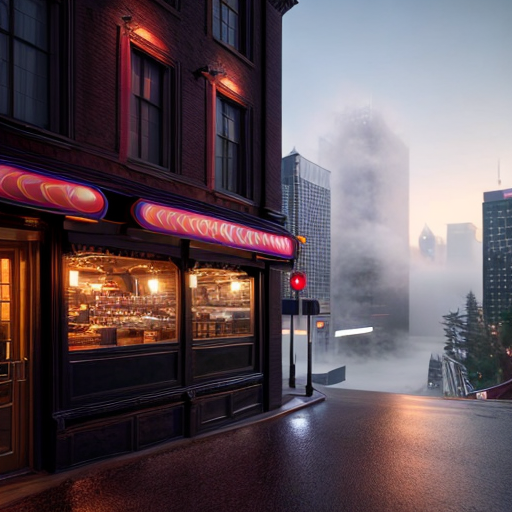Understanding Zoning Laws: A Comprehensive Guide to Restaurant Zoning Requirements
Alright, folks, let's dive into the wild world of zoning laws and their impact on our beloved restaurants. Picture this: you've got a brilliant idea for a new eatery that combines the flavors of Italy and Mexico, creating the ultimate fusion cuisine. But hold your horses, my culinary adventurers, because before you can start whipping up those mouthwatering dishes, you need to understand the zoning requirements for your restaurant. Zoning laws dictate where and how different types of businesses can operate, ensuring harmony in our urban landscapes. So, whether you're dreaming of opening a cozy bistro or a bustling food truck, buckle up and join me on this rollercoaster ride through the labyrinth of restaurant zoning regulations. Trust me, it's gonna be a wild, yet informative, journey!
Navigating Zoning Regulations: Essential Considerations for Opening a Restaurant
An interesting fact about zoning requirements for a restaurant is that they can vary significantly depending on the location and local regulations. In some areas, restaurants may be allowed in various zoning districts, such as commercial, mixed-use, or even residential zones. However, in certain neighborhoods or historic districts, there might be specific zoning restrictions that limit the type or size of restaurants allowed to preserve the area's character. For instance, some cities may have zoning regulations that prohibit fast-food chains or limit the number of restaurants in a particular area to maintain a diverse culinary scene. These zoning requirements aim to balance the economic vitality of the restaurant industry with the preservation of community aesthetics and cultural heritage.
Welcome, aspiring restaurateurs, to the thrilling world of zoning regulations! Now, before you start envisioning your trendy gastropub or charming café, let's talk about the nitty-gritty details of zoning requirements for your dream eatery. Zoning laws are like the traffic cops of the business world, determining where different types of establishments can set up shop. From the size of your establishment to parking requirements and even noise restrictions, these regulations ensure that your restaurant fits seamlessly into its designated zone. So, grab a cup of coffee (or a glass of wine, no judgment here) and join me as we navigate the labyrinth of zoning regulations, because trust me, it's a journey you won't want to miss!
Zoning Classifications for Restaurants: Exploring the Different Zoning Categories

Welcome, fellow food enthusiasts, to the fascinating world of zoning classifications for restaurants! When it comes to opening a culinary haven, understanding the different zoning categories is crucial. Let's start with the most common classification: commercial zoning. This category is typically reserved for areas where businesses thrive, allowing restaurants to flourish alongside other commercial establishments. From bustling city centers to vibrant shopping districts, commercial zones offer the perfect backdrop for your gastronomic dreams.
Next up, we have mixed-use zoning, which combines residential and commercial spaces. These zones are like the chameleons of the zoning world, offering a unique blend of living and business opportunities. If you're envisioning a cozy neighborhood café or a family-friendly diner, mixed-use zones might just be the perfect fit. Just be sure to check the specific regulations, as some areas may have restrictions on noise levels or operating hours to maintain harmony between residents and businesses.
Now, let's venture into the realm of industrial zoning. While it may not sound like the most appetizing option, industrial zones can be a hidden gem for certain types of restaurants. Think breweries, distilleries, or even food production facilities. These zones are designed for heavy-duty industrial activities, so if you're planning on opening a restaurant that involves large-scale food production or requires specialized equipment, industrial zoning might be your ticket to success.
Last but not least, we have the elusive historic zoning. These zones are a treasure trove for those seeking to preserve the charm and character of older buildings. If you've fallen head over heels for a charming Victorian house or a rustic barn, historic zoning can help you transform these architectural gems into one-of-a-kind dining destinations. Just keep in mind that these zones often come with strict regulations to maintain the historical integrity of the area, so be prepared for a few extra hoops to jump through.
So, my fellow culinary adventurers, as you embark on your restaurant journey, remember that understanding the different zoning classifications is like having a secret recipe for success. Whether you're eyeing a bustling commercial district, a mixed-use neighborhood, an industrial hub, or a historic gem, knowing the zoning requirements will help you navigate the maze of regulations and bring your culinary vision to life. Bon appétit!
Compliance and Permits: Meeting Zoning Requirements to Establish a Successful Restaurant
A fun fact about zoning requirements for a restaurant is that some cities have unique zoning regulations specifically for food trucks. These regulations often include designated zones or parking lots where food trucks can operate, allowing them to bring delicious meals and culinary diversity to different neighborhoods. So, if you're craving some tasty street food, keep an eye out for these designated food truck zones in your city!
Attention, future restaurateurs! As you embark on the thrilling journey of opening your own eatery, don't forget about the crucial step of compliance and permits. Meeting zoning requirements is the key to establishing a successful restaurant. From obtaining the necessary permits to ensuring your establishment aligns with the designated zoning regulations, compliance is the name of the game. Whether it's adhering to parking space requirements, noise restrictions, or even the size and layout of your dining area, staying on top of zoning requirements will not only keep you out of hot water but also set the stage for a thriving culinary venture. So, roll up your sleeves, dive into the world of permits, and get ready to make your restaurant dreams a reality!

